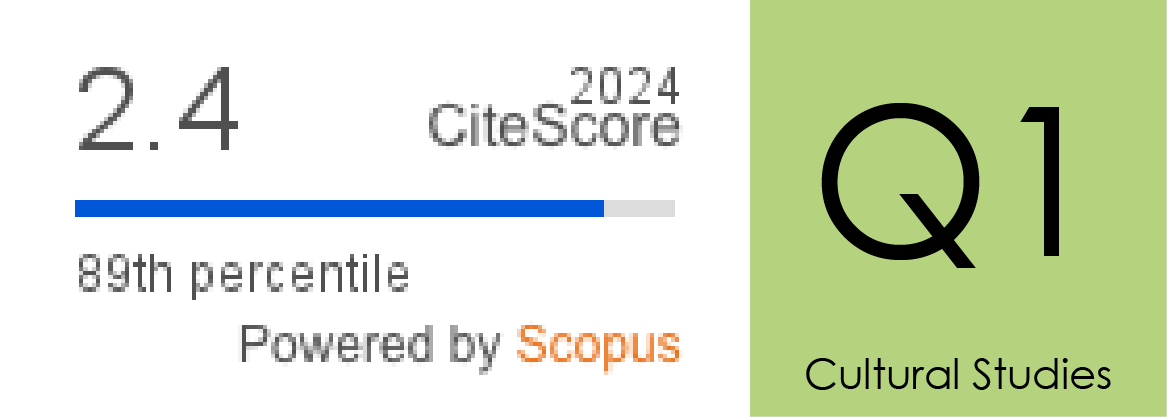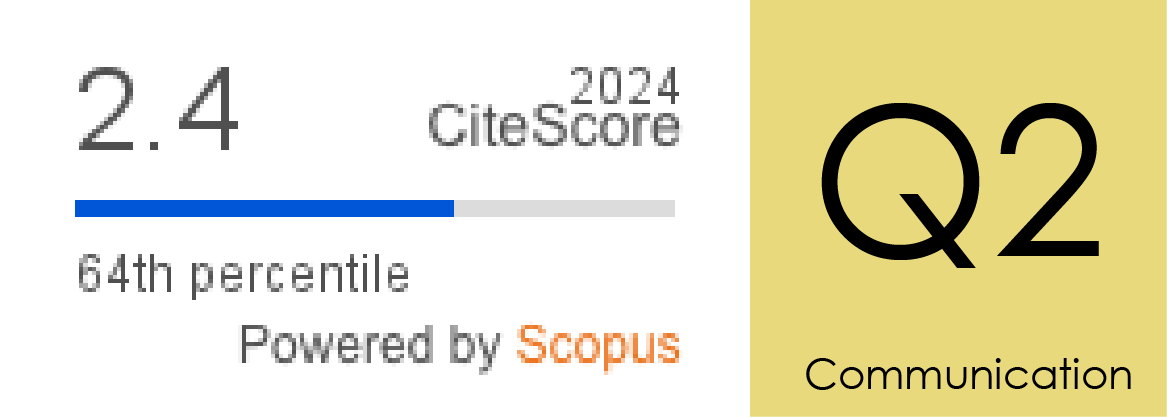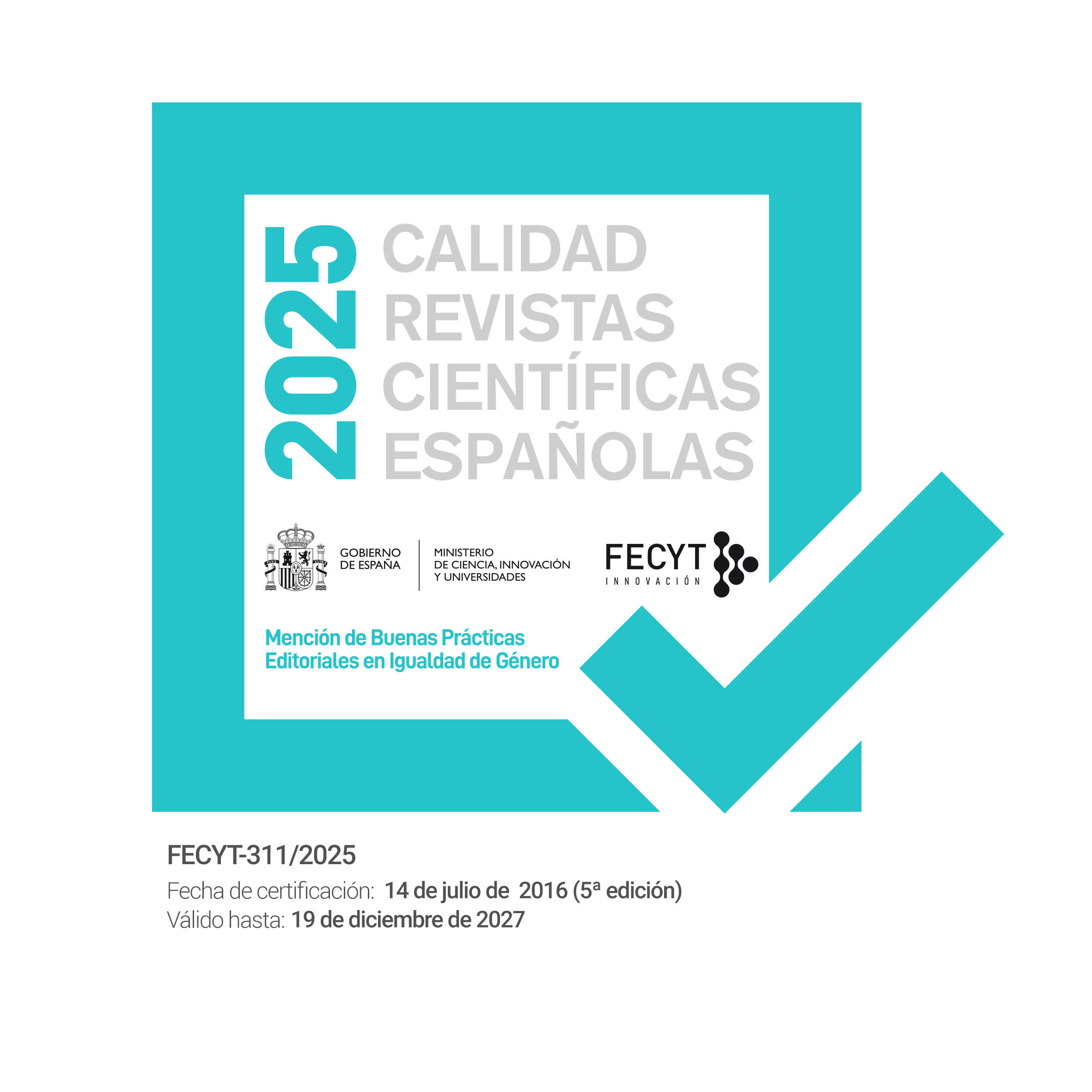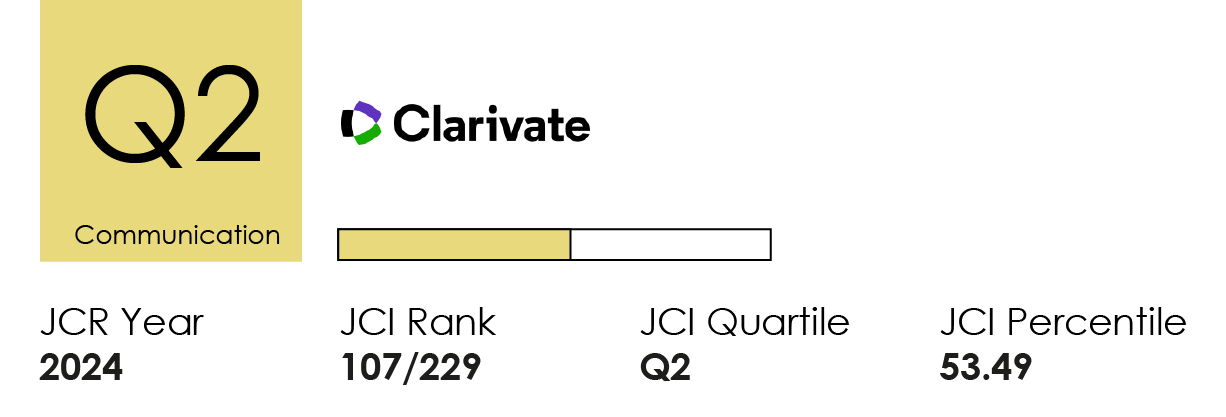Roles, aportaciones e invisibilidades femeninas en el campo de la investigación en comunicación [Editorial]
DOI:
https://doi.org/10.14198/MEDCOM.20163Palabras clave:
investigación en comunicación, género, mujer, historia intelectualResumen
-Citas
Referencias bibliográficas
Ashraft, K.L. y Simonson, P. (2016). Gender, work, and the history of communication research: Figures, formations, and flows. En P. Simonson y D.W. Park (Eds.), The international history of communication study (pp. 47-68). New York: Routledge.
Diezmann, C. y Grieshaber, S. (2019). Women professors. Who makes it and how? Berlin: Springer.
Dorsten, A.M. (2012). “Thinking dirty”: Digging up three founding “matriarchs” of communication studies. Communication Theory, 22(1), 25-47. DOI: https://doi.org/10.1111/j.1468-2885.2011.01398.x
Dorsten, A.M. (2016). Women in communication research. En K. B. Jensen y R. T. Craig (Eds.), The international encyclopedia of communication theory and philosophy (pp. 1-13). Hoboken: Wiley & Sons.
García-Jiménez, L. (en imprenta). Aportaciones femeninas a las teorías de la comunicación: Una propuesta para la docencia y la ciencia. Anàlisi.
Goyanes, M. y De-Marcos, L. (2020). Academic influence and invisible colleges through editorial board interlocking in communication sciences: A social network analysis of leading journals. Scientometrics, 123, 791–811. DOI: https://doi.org/10.1007/s11192-020-03401-z
Jansen, S. (1993). “The future is not what it used to be”: Gender, history and communication studies. Communication Theory, 3(2), 136-148. https://doi.org/10.1111/j.1468-2885.1993.tb00063.x
Klaus, E. y Seethaler, J. (2016) (eds.). What do we really know about Herta Herzog? Exploring the life and work of a pioneer of communication research. Frankfurt: Peter Lang.
Knobloch-Westerwick, S., Glynn, C. y Huge, M. (2013). The Matilda effect in science communication: An experiment on gender bias in publication quality perceptions and collaboration interest. Science Communication, 35(5), 603-625. DOI: https://doi.org/10.1177/1075547012472684
Lloyd, G. (1979). The man of reason. Metaphilosophy, 10(1), 18-37. DOI: https://doi.org/10.1111/j.1467-9973.1979.tb00062.x
Lozano-Ascencio, C., Gaitán-Moya, J.A., Caffarel-Serra, C. y Piñuel-Raigada, J.L. (2020). Una década de investigación universitaria sobre comunicación en España, 2007-2018. Profesional de la Información, 29 (4). DOI: https://doi.org/10.3145/epi.2020.jul.12
Rakow, L. (1986). Rethinking gender research in communication. Journal of Communication, 36(4), 11-26. https://doi.org/10.1111/j.1460-2466.1986.tb01447.x
Rodríguez, C., Magallanes, C., Marroquín, A. y Rincón, O. (2021). Mujeres de la comunicación. Bogotá: FES Comunicación.
Rowland, A. y Simonson, P. (2014). The founding mothers of communication research. Critical Studies in Media Communication, 31(1), 3–26. DOI: https://doi.org/10.1080/15295036.2013.849355
Signorielli, N. (1996). Women in communication: A biographical sourcebook. Westport: Greenwood Press.
Thiele, M. (2016). Female academics in communication science and the post-war reconstruction generation in Austria and Germany. En P. Simonson y D.W. Park (Eds.), The international history of communication study (pp. 130-150). New York: Routledge.
Tur-Viñes, V. y Núñez-Gómez, P. (2018). Grupos académicos españoles de investigación en comunicación. Communication & Society, 31(4), 173-192. Disponible en: https://revistas.unav.edu/index.php/communication-and-society/article/view/35680
Descargas
Estadísticas
Publicado
Cómo citar
Número
Sección
Licencia
Derechos de autor 2021 Leonarda García-Jiménez, Peter Simonson

Esta obra está bajo una licencia internacional Creative Commons Atribución 4.0.
Los autores y autoras que publican en esta revista están de acuerdo con los siguientes términos:
1 Derechos de autor. Los autores y autoras conservan sus derechos de autor, aunque ceden a la revista de forma no exclusiva los derechos de explotación (reproducción, distribución, comunicación pública y transformación) y garantizan a esta el derecho de primera publicación de su trabajo, el cual estará simultáneamente sujeto a la licencia indicada en punto 2. Los autores pueden establecer otros acuerdos adicionales para la distribución no exclusiva de la versión de la obra publicada en la revista, siempre que exista un reconocimiento de su publicación inicial en esta revista.
© Los autores.
2 Licencia. Los trabajos se publican en la revista sujetos a la licencia de Reconocimiento 4.0 Internacional de Creative Commons (CC BY 4.0); los términos se pueden consultar en https://creativecommons.org/licenses/by/4.0/
Esta licencia permite a terceros compartir (copiar y redistribuir el material en cualquier medio o formato) y adaptar (remezclar, transformar y crear a partir del material para cualquier finalidad, incluso comercial), siempre que se reconozca la autoría y la primera publicación en esta revista (Revista Mediterránea de Comunicación (RMC) / Mediterranean Journal of Communication (MJC), Universidad de Alicante, DOI de la obra), se proporcione un enlace a la licencia y se indique si se han realizado cambios en la obra.
3 Política de autoarchivo. Se recomienda a los autores que difundan sus trabajos a través de Internet para favorecer una circulación y difusión más rápidas y, con ello, un posible aumento en la citación y alcance entre la comunidad científica y académica, en las siguientes condiciones:
No se permite a los autores depositar en un repositorio institucional o temático, página web propia, etc., las versiones preprint (versión antes de ser evaluada) o postprint (versión evaluada y aceptada para su publicación) de sus trabajos antes de su publicación, pero sí el artículo final publicado (versión del editor).













